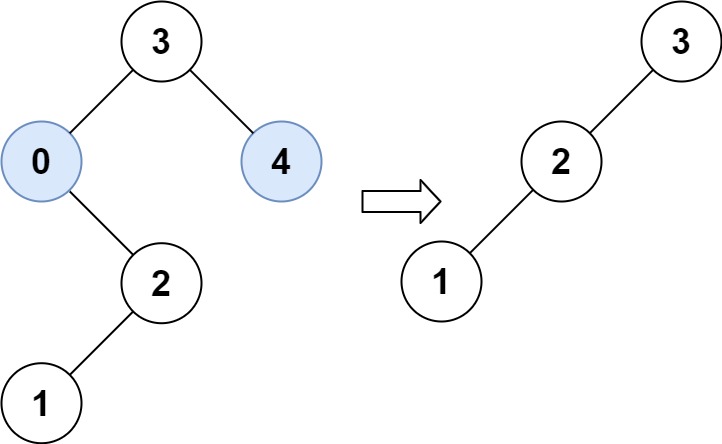669. Trim a Binary Search Tree
669. Trim a Binary Search Tree
Description
Given the root of a binary search tree and the lowest and highest boundaries as low and high, trim the tree so that all its elements lies in [low, high]. Trimming the tree should not change the relative structure of the elements that will remain in the tree (i.e., any node’s descendant should remain a descendant). It can be proven that there is a unique answer .
Return the root of the trimmed binary search tree. Note that the root may change depending on the given bounds.
Example 1:

1 | Input: root = [1,0,2], low = 1, high = 2 |
Example 2:

1 | Input: root = [3,0,4,null,2,null,null,1], low = 1, high = 3 |
Constraints:
- The number of nodes in the tree is in the range
[1, 10^4]. 0 <= Node.val <= 10^4- The value of each node in the tree is unique .
rootis guaranteed to be a valid binary search tree.0 <= low <= high <= 10^4
Hints/Notes
- binary search tree
Solution
Language: C++
1 | /** |